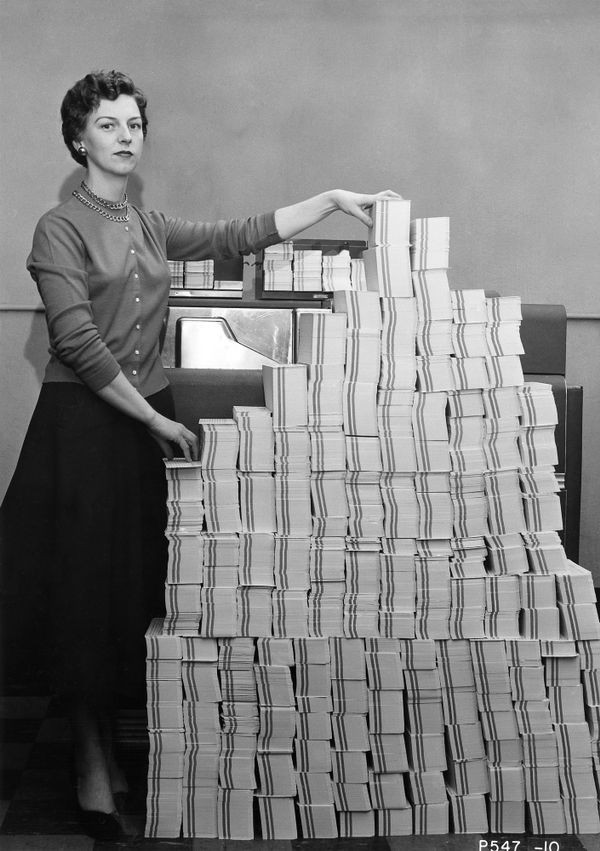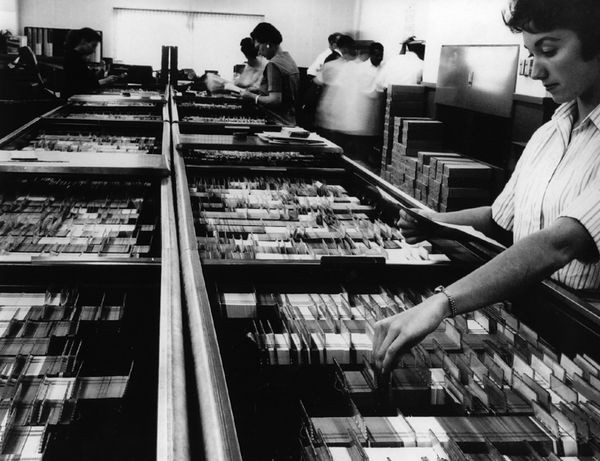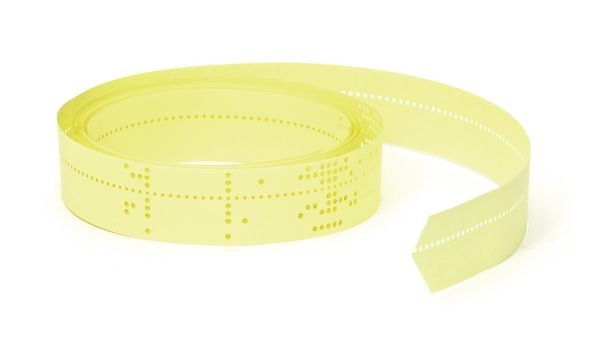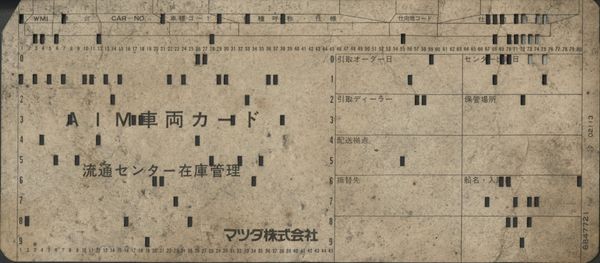Punched Cards & Paper Tape
Programmer standing beside punched cards
This stack of 62,500 punched cards — 5 MB worth — held the control program for the giant SAGE military computer network.
Punched Cards & Paper Tape
Many people were at first dubious that hole-filled cards were better than ledger books. Nonetheless, punched cards dominated data processing from the 1930s to 1960s. Clerks punched data onto cards using keypunch machines without needing computers.
Punched card tub file
Office clerks pull punched cards from a motorized “tub file.” Eliminating the cumbersome tub file was a goal of RAMAC, the world’s first disk drive.
View Artifact DetailJapanese punched card
Punched cards generally use one column of holes for each digit or letter. But there was no worldwide standard for the number of columns, the size of the card, or the shape of the hole. In 1928, IBM switched to rectangular holes on 80-column cards. Powers-Samas in the UK continued to uses round holes, and over the years had cards with 21, 26, 40, 65, and 80 columns. In the 1970s, IBM introduced a 96-column card with very tiny round holes.
View Artifact Detail


